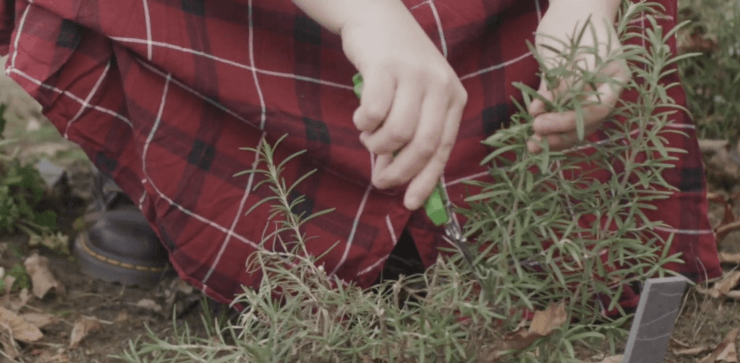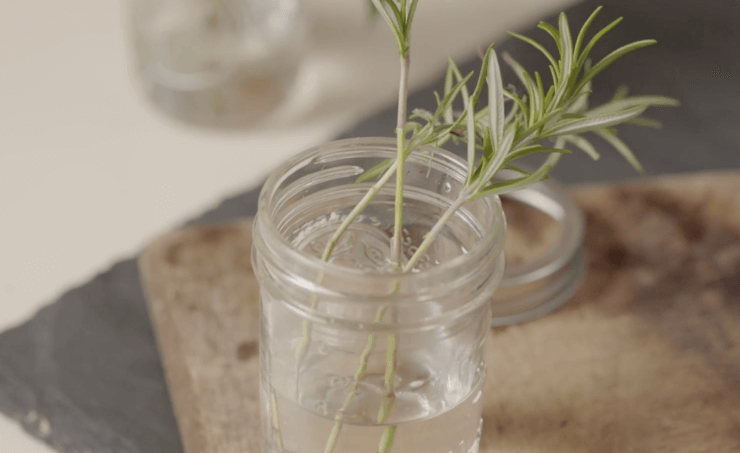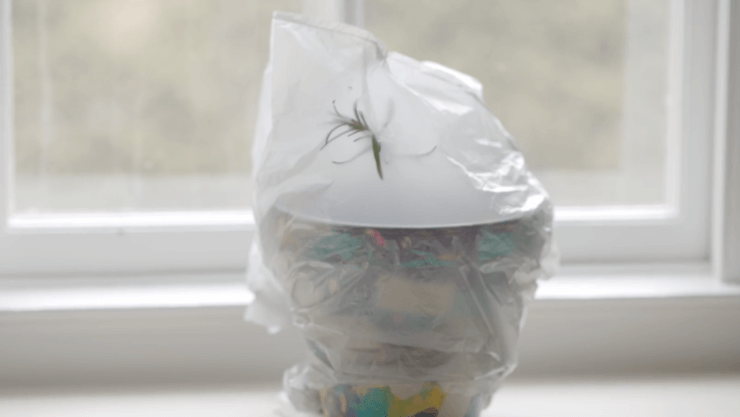
Rosemary is one of my absolute favorite herbs. I use it all the time for cooking and medicinal purposes. Plus, I love how it’s easy to propagate and grow indoors. If you’ve been meaning to grow your own rosemary but are too scared you’ll kill it, this article’s for you. Because the take-away is that you might, but you can always try, try, again.
Learning how to propagate rosemary is easy with a few simple steps. All it takes is a little patience to give it the attention it needs — and a lot of faith that it will grow under your care. You’ve got this.
But First, a Thing About Root Hormones
To quicken the process of propagating rosemary, you can use a powder or gel rooting hormone that will help the plant grow roots more quickly. Unfortunately, you’ll see on most labels that you’re advised not to eat the plant for at least a year after using these hormones. For me that’s a big red flag, so I go the “au naturale” route. And let’s be honest – this is more fun than practical to begin with – so if the rosemary cuttings don’t take root, you can get a new plant at the gardening center in the spring for about $4.

How To Take Stem Cuttings from Your Rosemary Plant
Before harvesting any stem cuttings, make sure that your rosemary plant is well watered and has plenty of new growth. If you think your rosemary can take it, follow these two simple steps below.
- Select the healthy stems and cut the top 4 to 6 inches using your pruning snips.
- Remove the lower leaves of the stem, exposing about 1 to 2 inches.

How To Grow Your Rosemary Stem Cuttings in Water
Your first option in growing your rosemary stem cutting is to use a jar of water. I know you’re probably worried at this point, but trust that your rosemary is healthy enough to grow new roots if these steps are done the right way:
- Fill a mason jar with 1 to 2 inches of room temperature water.
- Place the stem cuttings in the jar of water, making sure not to submerge the leaves.
- Position the jar on a windowsill or in a warm and humid area.
- Replace the water every couple of days to prevent root rot.
- Wait for the roots to develop in 2 to 4 weeks.

How To Grow Your Rosemary Stem Cuttings in Soil
Your second option in how to propagate rosemary is to plant the rosemary stem cutting in soil.
You can first follow all the steps above and then simply plant in moist soil following the instruction below. Or, you can start right away with soil.
To ensure healthy growth, follow the steps:
- Fill a pot with a potting mix that’s fully saturated with water.
- Dip your cuttings in a rooting hormone (optional)
- Stick 3 to 4 cuttings into the pot, about 1-inch deep.
- Place the pot under indirect light to prevent the roots from drying out.
- Mist with water using a spray bottle every 1 to 2 days.
- Cover with a clear plastic bag to preserve moisture and humidity.
- Wait for the roots to develop in 2 to 4 weeks. You’ll know when you see new growth.
- Optional: You can do this without rooting hormone, however, the roots won’t be as strong. As mentioned above though, you shouldn’t really use rooting hormone on anything you want to eat this year.
Time To Find Your Rosemary Cuttings a Bigger Home
Once your rosemary stem cuttings have developed well-established roots, you can transfer each cutting into a bigger pot with a sandy soil mix.
Each stem should have 4 to 6 roots of at least half an inch long. Position the potted rosemary in filtered sunlight until it matures, or use a fluorescent lamp as a light supplement. Make sure it’s getting 6 to 8 hours of light every day.
These propagation methods can be used with other herbs too:
- Thyme: Submerge two inches of the bare stem in water. Wait for it to mature in 6 to 8 weeks. Or, use growth hormone as above and plant directly in soil.
- Lavender: Choose a good-colored stem without buds. Hardwood cuttings take longer to grow than soft ones.
- Mint and Basil: Remove all the leaves and save 2 to 3 on top before submerging in water, where it can even grow permanently.
- Sage: Cut sprigs that are 4-6″ long then submerge 2″ of bare stem in water. Wait for roots, or, use growth hormone as above and plant directly in soil.
- Green Onions: Trim the tops of your green onion and place the bottoms in a shallow dish of water. The green onions will begin to produce roots within a week and you will see new growth right away after that.
What have you grown in water? Did you have success?


 Previous
Previous


I’ve heard rosemary and thyme will come back if left alone? Is that true
For thyme, yes for most climates. For Rosemary, also depending on where you live, yes. If you don’t get much of a freeze or summers that are 100+ they are perennial plants.
I also propínate basil ???? in water .
I also propínate basil ???? in water .
Yes basil does great in water! It will grow better in water than soil actually.
I propagate my Rosemary by selecting one of the long flexible stems and lightly scrape the bark away for a 1-inch length and halfway around the stem. I then bend the stem down to where the exposed scrape is touching the ground and place a brick on it to hold it in place plus block out the light. In a few months it will have a root cluster that can be cut away from the mother plant and leave you with a new transplant.
Awesome! Perfect for zones where rosemary is a perennial.